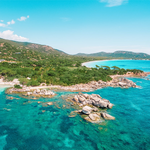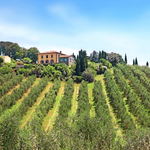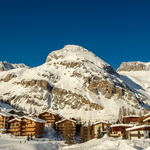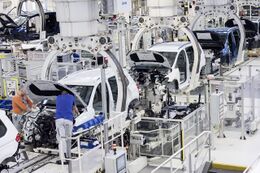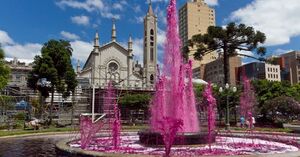Lavaria: Difference between revisions
No edit summary |
|||
| (44 intermediate revisions by 4 users not shown) | |||
| Line 1: | Line 1: | ||
{{Infobox country | {{Infobox country | ||
|conventional_long_name = Kingdom of Lavaria | |conventional_long_name = Kingdom of Lavaria | ||
|native_name = ''Reino da Lavária'' | |native_name = {{collapsible list | ||
|titlestyle = background:transparent; font-size:9pt; | |||
|title = {{resize|11.5pt|Native names}} | |||
|{{Infobox|subbox=yes|bodystyle= font-size:9pt; | |||
| rowclass1 = mergedrow| label1 = {{wp|Portuguese language|Lavish}}: | data1 = ''Reino da Lavária'' | |||
| rowclass2 = mergedrow| label2 = {{wp|Galician language|Abellan}}: | data2 = ''Reino de Lavaria'' | |||
| rowclass3 = mergedrow| label3 = {{wp|French language|Sarracese}}: | data3 = ''Royaume du Lavière '' | |||
| rowclass4 = mergedrow| label4 = {{wp|Occitan language|Gralacian}}: | data4 = ''Reiaume de Lavaria'' | |||
| rowclass5 = mergedrow| label5 = {{wp|Italian language|Panian}}: | data5 = ''Regno di Lavaria'' | |||
| rowclass6 = mergedrow| label6 = {{wp|Aromanian language|Valahian}}: | data6 = ''Вacилю a Лaвaря<br>Vasiliu a Lavaria'' | |||
}} | |||
}} | |||
|common_name = Lavaria | |common_name = Lavaria | ||
|image_flag = | |image_flag = NewLavariaFlag.png | ||
|alt_flag = [[Flag]] | |alt_flag = [[Flag]] | ||
|image_coat = | |image_coat = GrandCoA1Lavariasmaller.png | ||
|alt_coat = | |alt_coat = | ||
|symbol_type = Coat of Arms | |symbol_type = Greater Coat of Arms | ||
|national_motto = ''"Terra adorada, pátria amada."'' <br><small>"''Beloved land, loved nation''"</small> | |national_motto = ''"Terra adorada, pátria amada."'' <br><small>"''Beloved land, loved nation''"</small> | ||
|national_anthem = [[Hymn of the Gentle Mother]]<br><small>"Hino da Mãe Gentil"</small><br> | |national_anthem = [[Hymn of the Gentle Mother]]<br><small>"Hino da Mãe Gentil"</small><br> | ||
| Line 14: | Line 25: | ||
|other_symbol_type = | |other_symbol_type = | ||
|other_symbol = | |other_symbol = | ||
|image_map = | |image_map = LavariaMAP2.png | ||
|map_width = | |map_width = 330px | ||
|alt_map = | |alt_map = | ||
|map_caption = {{map caption|location_color=dark green |region=[[Cardia]]|region_color=green}} | |map_caption = {{map caption|location_color=dark green |region=[[Cardia]]|region_color=green}} | ||
|image_map2 = | |image_map2 = | ||
|alt_map2 = 230px | |alt_map2 = 230px | ||
|map_caption2 = | |map_caption2 = | ||
|capital = [[Aniarro]] <small>(seat of government)</small><br>[[Cambra]] <small>(constitutional)</small> | |capital = [[Aniarro]] <small>(seat of government)</small><br>[[Cambra]] <small>(constitutional)</small> | ||
|largest_city = [[Aniarro]] | |largest_city = [[Aniarro]] | ||
|official_languages = {{wp|Portuguese|Lavish}} | |official_languages = {{wp|Portuguese language|Lavish}} | ||
|national_languages = | |national_languages = *{{wp|French language|Sarracaise}} | ||
* {{wp|Occitan language|Gralacian}} | |||
* {{wp|Italian language|Panian}} | |||
* {{wp|Galician language|Abelan}} | |||
* {{wp|Aromanian language|Vlahian}} | |||
|regional_languages = | |regional_languages = | ||
|languages_type = <!--Other type of languages --> | |languages_type = <!--Other type of languages --> | ||
|languages = <!--Other languages list--> | |languages = <!--Other languages list--> | ||
|ethnic_groups = * | |ethnic_groups = *36,8% {{wpl|Galician people|Abelo}}{{wpl|Portuguese people|-lavish}} | ||
*30,4% {{wpl|French people|x}}{{wpl|Occitan people|-gralacian}} | |||
* | *25,9% {{wpl|Italian people|Pano-squerian}} | ||
* | *5,7% {{wpl|Aromanian people|Valahian}} | ||
* | *1,2% Other | ||
* | |ethnic_groups_year = 2020 | ||
|ethnic_groups_year = | |||
|demonym = Lavish | |demonym = Lavish | ||
|government_type = {{wp| | |government_type = {{wp|Federal state|Federal}} {{wp|parliamentary system|parliamentary}} {{wp|Constitutional monarchy|constitutional monarchy}} | ||
|leader_title1 = [[Monarchy of Lavaria|Monarch]] | |leader_title1 = [[Monarchy of Lavaria|Monarch]] | ||
|leader_name1 = Alberto Salazar I | |leader_name1 = Alberto Salazar I | ||
| Line 95: | Line 109: | ||
|HDI_category = very high | |HDI_category = very high | ||
|currency = [[Lirio]] | |currency = [[Lirio]] | ||
|currency_code = | |currency_code = £ | ||
|time_zone = | |time_zone = | ||
|utc_offset = | |utc_offset = | ||
| Line 111: | Line 125: | ||
|footnotes = | |footnotes = | ||
}} | }} | ||
'''Lavaria''' ({{wpl|Portuguese language|Lavish}}: ''Lavária'' [laˈvaɾia]), officially the '''Kingdom of Lavaria''' ({{wpl|Portuguese language|Lavish}}: ''Reino da Lavária''), is a {{wp|sovereign state}} and {{wp|constitutional monarchy}} located in central [[ | '''Lavaria''' ({{wpl|Portuguese language|Lavish}}: ''Lavária'' [laˈvaɾia]), officially the '''Kingdom of Lavaria''' ({{wpl|Portuguese language|Lavish}}: ''Reino da Lavária''), is a {{wp|sovereign state}} and {{wp|constitutional monarchy}} located in central [[Berea]] and at the eastern verge of the [[Siantric Peninsula]]. Lavaria borders [[Dulebia]] to the north-east, X to the east, X to the south-west and [[Sarrac]] to the west. With an area of NNN.NNN km2, Lavaria is the Xth largest country in Berea. In terms of population, Lavaria is the single-largest in Berea and the 5th [[Aurorum (region)|globally]] with a population of 50,099,425 (2016). The {{wpl|capital city}} is [[Cambra]], while the {{wpl|seat of government}} and financial center is located in [[Aniarro]]. Other important urban areas of the country include [[Boabela]], [[Pania (city)|Pania]], [[Salona]], [[Mesana]] and [[Guefa]]. | ||
Lavaria | X Lavaria's zenith period of power over central Berea was disrupted by defeat in the [[Karsk Sea War]] (1860–63) against the [[Dulebian Empire]]. The political tension and agitation between the two powers caused Lavaria to become one of the major participants of the [[Great War (Aurorum)|Great War]] (1910–1916), emerging victorious albeit at enormous human and material casualties. X | ||
Lavaria is a {{wpl|Parliamentary system|parliamentary}} {{wpl|democracy}} and a {{wpl|constitutional monarchy}}, with [[Monarchy of Lavaria|King]] [[Alberto Salazar I]] as the {{wpl|head of state}}, and [[Parliament of Lavaria|Prime Minister]] Adriano Mafra de Chagas as the {{wpl|head of government}}. It is a major {{wpl|developed country}} with the the world's XXth largest economy by {{wpl|nominal GDP}}. With a very high {{wpl|Human Development Index|HDI}} (0,866), Lavaria is classified well in numerous social aspects such as {{wpl|education}}, {{wpl|quality of life}}, {{wpl|healthcare}} and {{wpl|public safety}}. | |||
==History== | ==History== | ||
==Geography== | ==Geography== | ||
WIP v | |||
<gallery mode=packed heights=100px> | |||
File:Beach in south Lavaria.png|Coastal formation near [[Balsas]], [[Sait Hubert|Saint Hubert of the Lilacs]]. | |||
File:Oliveplantation in southern lavaria.png|Olives plantation outside of [[Pania (city)|Pania]]. | |||
File:Lowlands Lavaria.png|??? river running through the Lavish lowlands in the [[Duchy of Abellana]]. | |||
File:Vineyard alto alegre.png|Vineyard in the rural area of the [[Parreiras]] Province, west of the [[Duchy of ????]]. | |||
File:Granlac Country Lake.png|Medieval castle by the ??? lake, in the [[Gralacian Country]]. | |||
File:Montalvian Alos.png|Skiing village in the Alabastrino alps, in the Province of [[Montalvia]], [[Duchy of Abellana]]. | |||
</gallery> | |||
===Climate=== | ===Climate=== | ||
===Biodiversity=== | ===Biodiversity=== | ||
| Line 140: | Line 163: | ||
==Economy== | ==Economy== | ||
[[File:puerto madero 1 (cropped).png|thumb|340px|right| Aniarro is a global city and a financial hub for multiple entrepeneurs and multinationals ]] | [[File:puerto madero 1 (cropped).png|thumb|340px|right| Aniarro is a global city and a financial hub for multiple entrepeneurs and multinationals ]] | ||
Lavaria is the | Lavaria is the third-largest economy in [[Berea]] and the seventh-largest economy in the world by {{wpl|nominal GDP}} ($1,2 trillion). In the decades following the [[Great War (Aurorum)|Great War]] and before the [[Lavish civil war]], the administration of the northern [[regions of Lavaria]] leaned towards communist ideologies, seen that the level of poverty in those areas grew exponentially during the 1910s and 1920s. By 1931, a year before the Civil War, the unemployment rate was up to 17,4%. During that period, most of the nation’s biggest companies from the north were made statal. Important companies like [[COPEXN]] (Compania de Petróleo e Extração Natural), [[Bank of Lavaria]] (Banco da Lavária), [[CANAMA]] (Compania Nacional de Aço e Metalúrgica), and [[Villa Lobos GM|FAUP]] (Fábrica Automotiva Popular), were state-owned companies until 1945 after the reunification and a series of economic reforms that followed. The rather socialist government in northern Lavaria was able to lower the regional unemployment rates by almost 6%, though the extreme protectionist policies on exports and imports kept the regional economy from thriving. When the country reunified and the parliament was remodeled, the concept of an {{wpl|open market}} economy was brought back in, and most of the previous state-owned companies were privatized. In 1966, Lavaria changed its currency from the Ouro to the [[Lavish Lirio|Lírio]] (£). The currency change elevated the country's economy, leading to a GDP increase of 10,3% between the years of 1968 and 1973. | ||
[[File:DB2016FA00015 blog.jpg|thumb|260px|left|Assembly line of a VLGM factory in Villa Lobos, Aniarro, in 2019]] | [[File:DB2016FA00015 blog.jpg|thumb|260px|left|Assembly line of a VLGM factory in Villa Lobos, Aniarro, in 2019]] | ||
Lavaria is one of the world's biggest exporters with $613,7 billion exported in 2010 and generated a comercial superavit of $150 billion. The {{wpl|Tertiary sector of the economy|service sector}} contributed with 68,3% of the GDP, the industry sector contributed with 30,1% and agriculture with 1,6%. Lavaria's top 5 biggest trading partners are [[Mascylla]], [[ | Lavaria is one of the world's biggest exporters with $613,7 billion exported in 2010 and generated a comercial superavit of $150 billion. The {{wpl|Tertiary sector of the economy|service sector}} contributed with 68,3% of the GDP, the industry sector contributed with 30,1% and agriculture with 1,6%. Lavaria's top 5 biggest trading partners are [[Mascylla]], [[Falland]], [[Dulebia]], [[Nanzhou]] and [[Kenlong]]. The majority of Lavish products are engineering, autovehicles, machinery, pharmaceuticals, and chemicals products. Lavaria is one of the biggest oil and natural gas producers in Cardia. Some of the most industrialized cities in Lavaria are [[Aniarro]], [[Boabela]], [[Bodã]] and [[Cambra]]. | ||
Among the largest companies negociated in the world stock market, 5 out of the 50 most lucrative ones are based in Lavaria. The 10 largest companies are [[Villa Lobos GM]] (former FAUP), [[Ave Airways|Ave Cia. Aérea]], [[COPEXN]], [[CANAMA]], [[Bank of Lavaria]], [[Auger Motors|Auger]], [[P.Q.T. Coupart|Polo Químico Thibaut Coupart]], [[Martel CE]], [[Bruno-Covillon]] and [[Rede Gama]]. Other notorious companies are [[ALBEV]] (Associação Lavariana de Bebidas e Vinhos), [[Credeve]], [[Green Bank]], [[Braga-Chandonnet Insurance]], among many others that demonstrates the strenght of the Lavish economy worldwide. | Among the largest companies negociated in the world stock market, 5 out of the 50 most lucrative ones are based in Lavaria. The 10 largest companies are [[Villa Lobos GM]] (former FAUP), [[Ave Airways|Ave Cia. Aérea]], [[COPEXN]], [[CANAMA]], [[Bank of Lavaria]], [[Auger Motors|Auger]], [[P.Q.T. Coupart|Polo Químico Thibaut Coupart]], [[Martel CE]], [[Bruno-Covillon]] and [[Rede Gama]]. Other notorious companies are [[ALBEV]] (Associação Lavariana de Bebidas e Vinhos), [[Credeve]], [[Green Bank]], [[Braga-Chandonnet Insurance]], among many others that demonstrates the strenght of the Lavish economy worldwide. | ||
| Line 150: | Line 173: | ||
===Tourism=== | ===Tourism=== | ||
[[File:Download.jpg|300px|thumb|right|Guefa's Botanical Garden.]] | [[File:Download.jpg|300px|thumb|right|Guefa's Botanical Garden.]] | ||
In the recent years, the toursim industry in Lavaria has increased due to the flourshing economy and internal investment. In 2012, the number of flights destinated to Lavaria increade by 63%. Since 2018, the tourism sector of the economy became the 5th most lucrative sector in the country. Every region of Lavaria has at least one international airport, with the biggest ones being located in [[Aniarro]], [[Cambra]], [[ | In the recent years, the toursim industry in Lavaria has increased due to the flourshing economy and internal investment. In 2012, the number of flights destinated to Lavaria increade by 63%. Since 2018, the tourism sector of the economy became the 5th most lucrative sector in the country. Every region of Lavaria has at least one international airport, with the biggest ones being located in [[Aniarro]], [[Cambra]], [[Boabela]], [[Guefa]] and [[Balsas]]. Tourism in Lavaria is extremly diversified, going from mountanous regions to gold beaches with clear, warm waters. | ||
Seasonal tourism is constant in Lavaria. The [[Serra Branca]] is a hub for tourists during the winter season. The [[National Grape and Wine Festival]] is a famous celebration held in [[Alto Alegre]], province of [[Berganza]], which celebrates the extense wine culture of the region. It's one of the most famous events in the country and it's called ''Festa da Uva'', when lots of merrymaking, wine drinking, grapes and people animate the month of January, every two years. Located 78km away from Guefa, the city of [[Hortencias]] is also widely known for its lush nature and hesurian architercture. Hortencias is also part of the Pais do Vinho scenic tourist tour, which takes visitors to the most famous wineries of Lavaria. | Seasonal tourism is constant in Lavaria. The [[Serra Branca]] is a hub for tourists during the winter season. The [[National Grape and Wine Festival]] is a famous celebration held in [[Alto Alegre]], province of [[Berganza]], which celebrates the extense wine culture of the region. It's one of the most famous events in the country and it's called ''Festa da Uva'', when lots of merrymaking, wine drinking, grapes and people animate the month of January, every two years. Located 78km away from Guefa, the city of [[Hortencias]] is also widely known for its lush nature and hesurian architercture. Hortencias is also part of the Pais do Vinho scenic tourist tour, which takes visitors to the most famous wineries of Lavaria. | ||
During summer, the | During summer, the southern coast attracts the most visitors. After the expansion of the [[Pania]] international airport, the city started to increasingly recieve thousands of visitors from around the world. Nearby beaches like the Cabo de São Mário do Sul, Praia das Caravelas and Praia das Dunas are some of the most frequently visited. The city of [[Balsas]], in the autonomous region of [[Saint Hubert of the Lilacs]], constantly holds summer musical events like the [[Ao Vivo Verão]], every two years. | ||
The big cities are also highly demanded for tourism. Aniarro and Boisbelle are famous for the | The big cities are also highly demanded for tourism. Aniarro and Boisbelle are famous for the urban atmosphere. Many museums and historical buildings can be found. The Museu Nacional da Guerra Continental, one of the biggest museums on the [[Great War (Aurorum)|Great War]]] in the world, is located in Boabela. Cambra, however, is the biggest city to recieve the most amount of visitors due to its famous royal scenic touristic tour around the city. Guefa is another tourism hub, with the Jardim Botânico being the hotspot for visitors looking for a less crowded big city. | ||
[[File:2565f63bbaef3265148672967a562fbe.jpg|300px|thumb| | [[File:2565f63bbaef3265148672967a562fbe.jpg|300px|thumb|right|Wine fountain in Alto Alegre, also known as the national capital of wine.]] | ||
===Winemaking=== | ===Winemaking=== | ||
| Line 176: | Line 199: | ||
===Sports=== | ===Sports=== | ||
===Celebrations and Holidays=== | ===Celebrations and Holidays=== | ||
[[Category:Lavaria]] | |||
[[Category:Countries of Aurorum]] | |||
Latest revision as of 10:58, 30 June 2022
Kingdom of Lavaria | |
|---|---|
Motto: "Terra adorada, pátria amada." "Beloved land, loved nation" | |
 Location of Lavaria (dark green) in Cardia (green) | |
| Capital | Aniarro (seat of government) Cambra (constitutional) |
| Largest city | Aniarro |
| Official languages | Lavish |
| Recognised national languages | |
| Ethnic groups (2020) |
|
| Demonym(s) | Lavish |
| Government | Federal parliamentary constitutional monarchy |
• Monarch | Alberto Salazar I |
| Adriano Mafra de Chagas | |
| Legislature | National Parliament |
| Senado Nacional | |
| Câmara Popular | |
| Area | |
• Total | 556,507 km2 (214,869 sq mi) |
| Population | |
• Estimate | 50,099,425 |
• Density | 81.8/km2 (211.9/sq mi) |
| GDP (nominal) | 2017 estimate |
• Total | $1,2 trillion |
• Per capita | $24,867 |
| HDI (2016) | very high |
| Currency | Lirio (£) |
| Date format | dd/mm/yyyy |
| Driving side | left |
| Calling code | +21 |
| Internet TLD | .la |
Lavaria (Lavish: Lavária [laˈvaɾia]), officially the Kingdom of Lavaria (Lavish: Reino da Lavária), is a sovereign state and constitutional monarchy located in central Berea and at the eastern verge of the Siantric Peninsula. Lavaria borders Dulebia to the north-east, X to the east, X to the south-west and Sarrac to the west. With an area of NNN.NNN km2, Lavaria is the Xth largest country in Berea. In terms of population, Lavaria is the single-largest in Berea and the 5th globally with a population of 50,099,425 (2016). The capital city is Cambra, while the seat of government and financial center is located in Aniarro. Other important urban areas of the country include Boabela, Pania, Salona, Mesana and Guefa.
X Lavaria's zenith period of power over central Berea was disrupted by defeat in the Karsk Sea War (1860–63) against the Dulebian Empire. The political tension and agitation between the two powers caused Lavaria to become one of the major participants of the Great War (1910–1916), emerging victorious albeit at enormous human and material casualties. X
Lavaria is a parliamentary democracy and a constitutional monarchy, with King Alberto Salazar I as the head of state, and Prime Minister Adriano Mafra de Chagas as the head of government. It is a major developed country with the the world's XXth largest economy by nominal GDP. With a very high HDI (0,866), Lavaria is classified well in numerous social aspects such as education, quality of life, healthcare and public safety.
History
Geography
WIP v
Coastal formation near Balsas, Saint Hubert of the Lilacs.
Olives plantation outside of Pania.
??? river running through the Lavish lowlands in the Duchy of Abellana.
Vineyard in the rural area of the Parreiras Province, west of the Duchy of ????.
Medieval castle by the ??? lake, in the Gralacian Country.
Skiing village in the Alabastrino alps, in the Province of Montalvia, Duchy of Abellana.
Climate
Biodiversity
Demographics
Ethnicities
Religion
Languages
Government & Politics
Law
Armed forces
Crime and law enforcement
International relations
Sub-divisions
Economy
Lavaria is the third-largest economy in Berea and the seventh-largest economy in the world by nominal GDP ($1,2 trillion). In the decades following the Great War and before the Lavish civil war, the administration of the northern regions of Lavaria leaned towards communist ideologies, seen that the level of poverty in those areas grew exponentially during the 1910s and 1920s. By 1931, a year before the Civil War, the unemployment rate was up to 17,4%. During that period, most of the nation’s biggest companies from the north were made statal. Important companies like COPEXN (Compania de Petróleo e Extração Natural), Bank of Lavaria (Banco da Lavária), CANAMA (Compania Nacional de Aço e Metalúrgica), and FAUP (Fábrica Automotiva Popular), were state-owned companies until 1945 after the reunification and a series of economic reforms that followed. The rather socialist government in northern Lavaria was able to lower the regional unemployment rates by almost 6%, though the extreme protectionist policies on exports and imports kept the regional economy from thriving. When the country reunified and the parliament was remodeled, the concept of an open market economy was brought back in, and most of the previous state-owned companies were privatized. In 1966, Lavaria changed its currency from the Ouro to the Lírio (£). The currency change elevated the country's economy, leading to a GDP increase of 10,3% between the years of 1968 and 1973.
Lavaria is one of the world's biggest exporters with $613,7 billion exported in 2010 and generated a comercial superavit of $150 billion. The service sector contributed with 68,3% of the GDP, the industry sector contributed with 30,1% and agriculture with 1,6%. Lavaria's top 5 biggest trading partners are Mascylla, Falland, Dulebia, Nanzhou and Kenlong. The majority of Lavish products are engineering, autovehicles, machinery, pharmaceuticals, and chemicals products. Lavaria is one of the biggest oil and natural gas producers in Cardia. Some of the most industrialized cities in Lavaria are Aniarro, Boabela, Bodã and Cambra.
Among the largest companies negociated in the world stock market, 5 out of the 50 most lucrative ones are based in Lavaria. The 10 largest companies are Villa Lobos GM (former FAUP), Ave Cia. Aérea, COPEXN, CANAMA, Bank of Lavaria, Auger, Polo Químico Thibaut Coupart, Martel CE, Bruno-Covillon and Rede Gama. Other notorious companies are ALBEV (Associação Lavariana de Bebidas e Vinhos), Credeve, Green Bank, Braga-Chandonnet Insurance, among many others that demonstrates the strenght of the Lavish economy worldwide.
Lavaria is a major shipping nation and has the world's 2nd largest merchant fleet, with 7,259 Lavish-owned merchant vessels. Some of the most important Lavish shipping companies are Hipolito TM, Compania de Comercio Marinho da Lavaria (CCML), Linha Marinha Leste-Lavariana, Grupo de Exportação Marítima Aranda-Sanchez (GEM Aranda-Sanchez), and Comercial Marítima Balsense (CMB).
Tourism
In the recent years, the toursim industry in Lavaria has increased due to the flourshing economy and internal investment. In 2012, the number of flights destinated to Lavaria increade by 63%. Since 2018, the tourism sector of the economy became the 5th most lucrative sector in the country. Every region of Lavaria has at least one international airport, with the biggest ones being located in Aniarro, Cambra, Boabela, Guefa and Balsas. Tourism in Lavaria is extremly diversified, going from mountanous regions to gold beaches with clear, warm waters.
Seasonal tourism is constant in Lavaria. The Serra Branca is a hub for tourists during the winter season. The National Grape and Wine Festival is a famous celebration held in Alto Alegre, province of Berganza, which celebrates the extense wine culture of the region. It's one of the most famous events in the country and it's called Festa da Uva, when lots of merrymaking, wine drinking, grapes and people animate the month of January, every two years. Located 78km away from Guefa, the city of Hortencias is also widely known for its lush nature and hesurian architercture. Hortencias is also part of the Pais do Vinho scenic tourist tour, which takes visitors to the most famous wineries of Lavaria. During summer, the southern coast attracts the most visitors. After the expansion of the Pania international airport, the city started to increasingly recieve thousands of visitors from around the world. Nearby beaches like the Cabo de São Mário do Sul, Praia das Caravelas and Praia das Dunas are some of the most frequently visited. The city of Balsas, in the autonomous region of Saint Hubert of the Lilacs, constantly holds summer musical events like the Ao Vivo Verão, every two years.
The big cities are also highly demanded for tourism. Aniarro and Boisbelle are famous for the urban atmosphere. Many museums and historical buildings can be found. The Museu Nacional da Guerra Continental, one of the biggest museums on the Great War] in the world, is located in Boabela. Cambra, however, is the biggest city to recieve the most amount of visitors due to its famous royal scenic touristic tour around the city. Guefa is another tourism hub, with the Jardim Botânico being the hotspot for visitors looking for a less crowded big city.
Winemaking
The production of wine counts for over 26% of the lavish food and beverage exports. The country holds a deep wine culture, specially in the Serra Branca region. The biggest wine producer is the province of Berganza, followed by the provinces of Vinhal do Norte, Essandria and Sordia. Altogether, those 4 provinces produced over 84% of the wine produced for exports. Alto Alegre, in Berganza, is known as the national capital of wine, where most of the world renowned Lavish wines are from. Wines in Lavaria are named after the province they are from. The Berganza Wine has been considered multiple times by specialists as one of the best in the world.
Lavaria is the second biggest wine producer in Gaia, with 54.8 million hectolitres (M hl) produced in the year of 2019.


